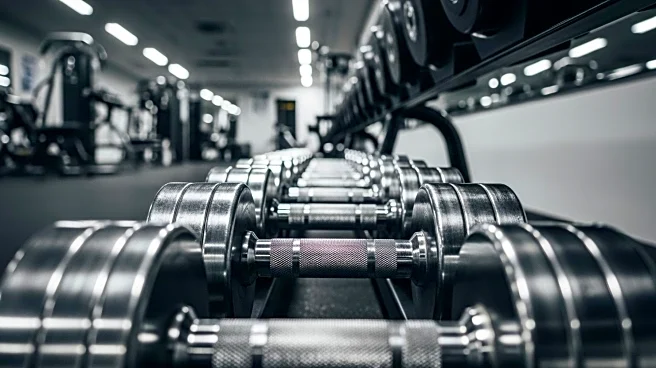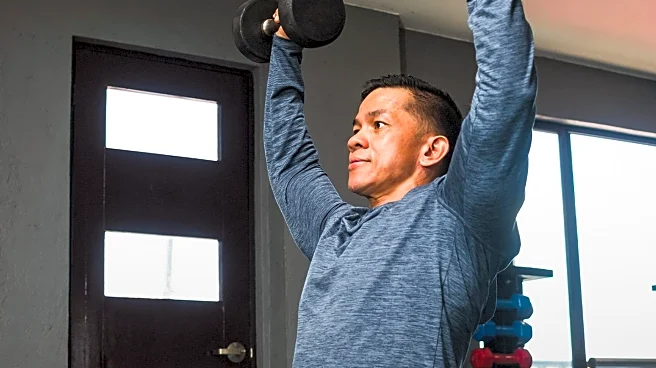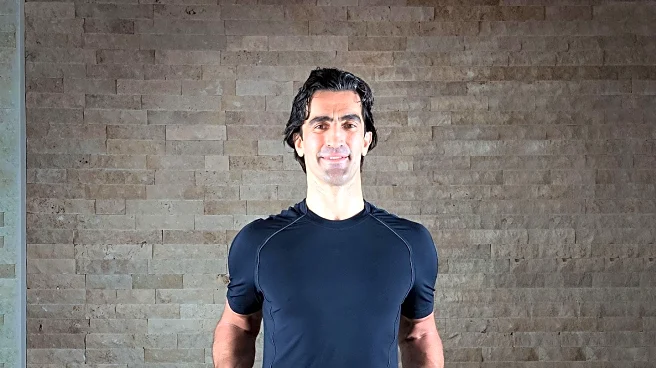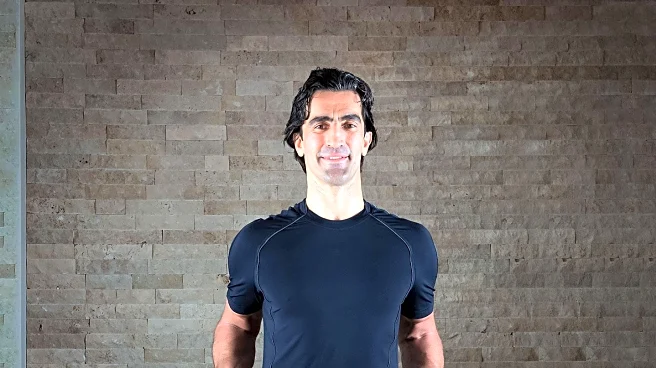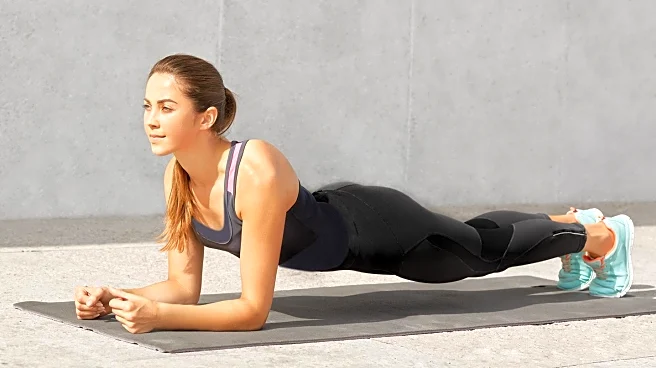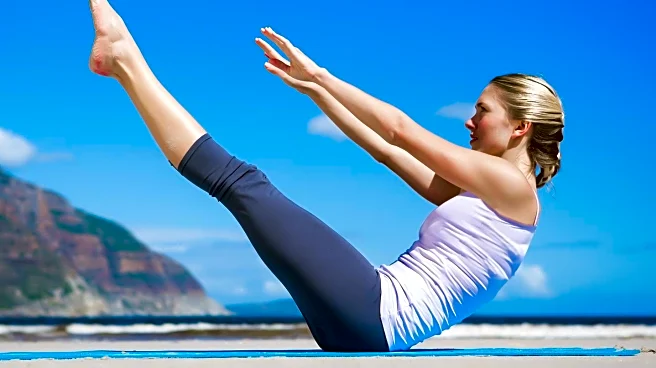What's Happening?
The Z Press, a lesser-known exercise, is gaining attention for its effectiveness in enhancing shoulder strength and form. According to fitness experts Ebenezer Samuel, C.S.C.S., and Brett Williams, NASM-CPT, the Z Press is performed while seated on the floor with legs extended, which removes the lower body from the movement and allows for greater focus on core stability and shoulder positioning. The exercise is typically done with a kettlebell or dumbbell, emphasizing proper joint alignment and core engagement. This method is particularly beneficial for reinforcing good shoulder press form without arching the back, making it a valuable addition to shoulder or pressing workouts.
Why It's Important?
The Z Press offers significant benefits for individuals looking to improve their shoulder strength and overall pressing technique. By isolating the upper body and engaging the core, the exercise helps prevent common form issues such as back arching, which can lead to injury. This makes it an effective tool for both novice and experienced lifters aiming to enhance their shoulder workouts. Additionally, the focus on core stability can contribute to better overall posture and functional strength, which are crucial for daily activities and athletic performance. As fitness enthusiasts seek efficient and safe ways to build strength, the Z Press provides a valuable option.
What's Next?
As the Z Press gains popularity, it is likely to become a staple in more fitness routines, particularly for those focused on improving shoulder strength and form. Fitness trainers and enthusiasts may begin incorporating this exercise into their programs, potentially leading to further variations and adaptations. Additionally, as more people become aware of its benefits, there may be increased interest in exploring other unconventional exercises that offer similar advantages. The fitness industry could see a trend towards more innovative and targeted strength training techniques.
Beyond the Headlines
The growing interest in exercises like the Z Press reflects a broader shift in the fitness industry towards functional and corrective training. This approach emphasizes movements that enhance everyday physical capabilities and prevent injuries, rather than just focusing on aesthetics. As people become more health-conscious and informed about the importance of proper form and injury prevention, exercises that promote these values are likely to gain traction. This trend could lead to a more holistic understanding of fitness, where strength training is integrated with overall well-being and longevity.
